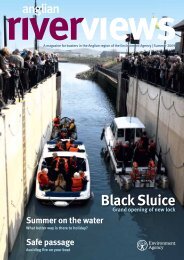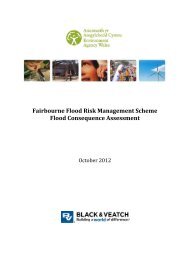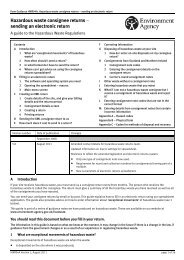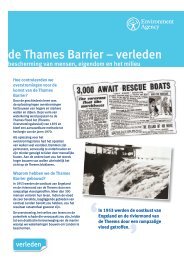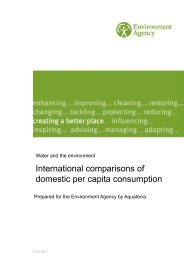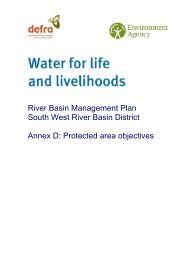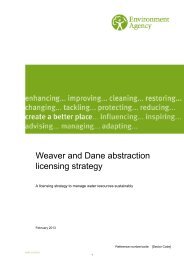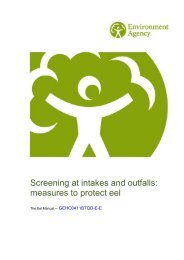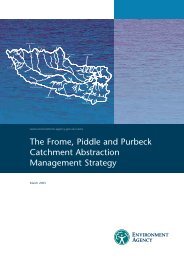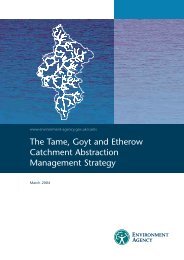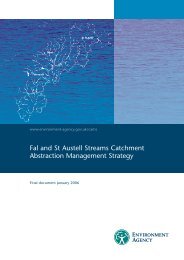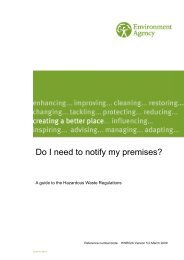preliminary flood risk assessment drain london
preliminary flood risk assessment drain london
preliminary flood risk assessment drain london
Create successful ePaper yourself
Turn your PDF publications into a flip-book with our unique Google optimized e-Paper software.
Very High of the BGS and the TE2100 data were used as this was judged to best represent the<br />
hazard.<br />
The techniques used to generate the iPEG map produced some small areas of increased<br />
potential and some dry islands within increased potential areas. These have not been cleaned<br />
in order to best represent the original data.<br />
How to Use and Interpret the Map<br />
The increased Potential for Elevated Groundwater map shows those areas within the Borough<br />
where there is an increased potential for groundwater to rise sufficiently to interact with the<br />
ground surface or be within 2 m of the ground surface.<br />
Groundwater may become elevated by a number of means:<br />
� Above average rainfall for a number of months in Chalk outcrop areas;<br />
� Shorter period of above average rainfall in permeable superficial deposits;<br />
� Permeable superficial deposits in hydraulic continuity with high water levels in the river;<br />
� Interruption of groundwater flow paths; and<br />
� Cessation of groundwater abstraction causing groundwater rebound.<br />
With the exception of groundwater rebound which is not covered, the iPEG map will identify<br />
those areas most prone to the mechanisms described above. The map shows those areas<br />
considered to have the greatest potential for elevated groundwater. Additional areas within the<br />
London Boroughs have permeable geology and therefore could also produce elevated<br />
groundwater levels. However, to produce a realistic map, only where there is the highest degree<br />
of confidence in the <strong>assessment</strong> are the areas delineated. This ensures resources are focused<br />
on the most susceptible areas. In all areas underlain by permeable substrate, groundwater<br />
should still be considered in planning developments.<br />
Within the areas delineated, the local rise of groundwater will be heavily controlled by local<br />
geological features and artificial influences (e.g. structures or conduits) which cannot currently<br />
be represented. This localised nature of groundwater <strong>flood</strong>ing compared with, say, fluvial<br />
<strong>flood</strong>ing suggests that interpretation of the map should similarly be different. The map shows the<br />
area within which groundwater has the potential to emerge but it is unlikely to emerge uniformly<br />
or in sufficient volume to fill the topography to the implied level. Instead, groundwater emerging<br />
at the surface may simply runoff to pond in lower areas. The localised nature of groundwater<br />
<strong>flood</strong>ing and the different interpretation of the maps required is illustrated in the cartoon in<br />
Figure 5.8.<br />
UA002334 - Drain London— London Borough of Brent PFRA<br />
Hyder Consulting (UK) Limited-2212959 Page 19<br />
o:\frr review monitoring & reporting team\publishing\unknown\brent\brent_par.docx



